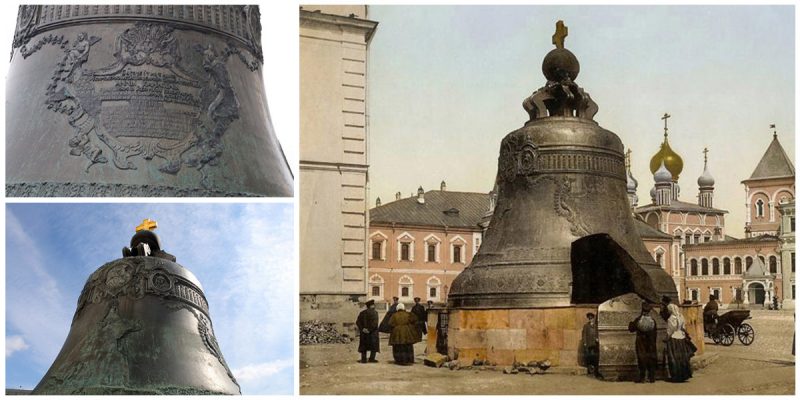Twenty-two feet in diameter, 21 feet high, and weighing 450,000 pounds, the Tsar Bell is considered to be the largest bell in the world and a masterpiece of 18th-century Russian casting technology.
This colossal bell was cast in 1735 by a team of nearly 200 craftsmen under the supervision of Ivan Motorin and his son Mikhail. The empress Anna Ioannova, the niece of Peter the Great, ordered its creation. Today, the bell stands on a large pedestal beside the Ivan the Great Bell Tower in the grounds of the Kremlin in Moscow.
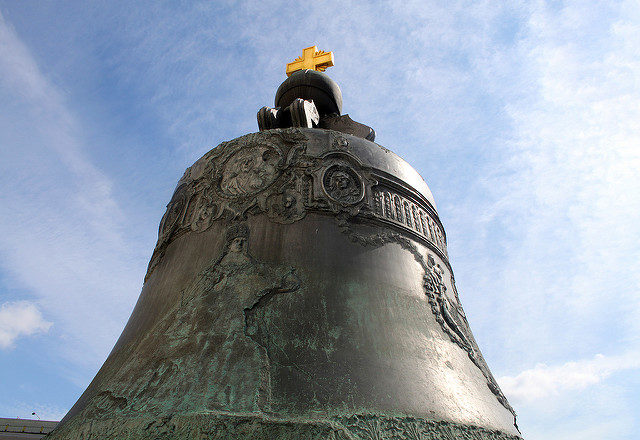
This monument of 18th-century foundry art is also known as “Tsar Kolokol III,” because it was cast three times, with more metal was added each time. The first bell was cast during the reign of Boris Godunov (1585–1605) by Andrey Chokhov, a prominent Russian master bell caster who worked in Moscow more than 40 years.
After it was destroyed by a fire in the middle of the 17th century, caster Emelian Danilov used its metal, along with new materials, to create the second Tsar Kolokol, during the reign of Tsar Alexey Mikhailovich. It weighed 220,000 pounds but was again destroyed by fire in 1701.
After Anna Ioannovna became empress, she ordered all the pieces to be cast into a new bell with its weight increased by another hundred tons. The job was assigned to local foundry masters, Ivan and Mikhail Motorin.
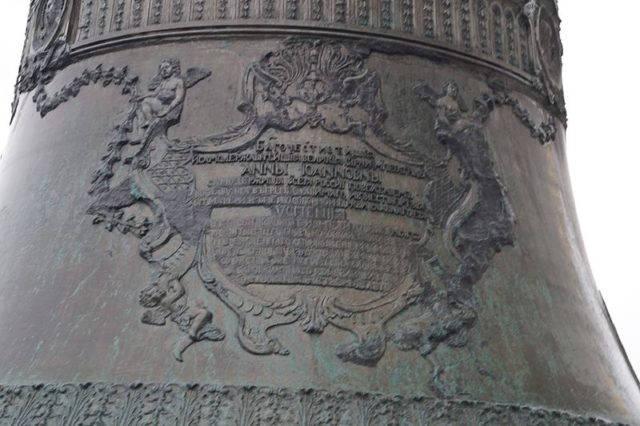
After months of preparation, casting work began at the end of November 1734. The casting of the enormous bronze bell was a giant task that took almost two years to complete. In 1737, when it was finally raised above the casting pit to cool before the last ornamentation was completed, a terrible fire broke out in the Kremlin.
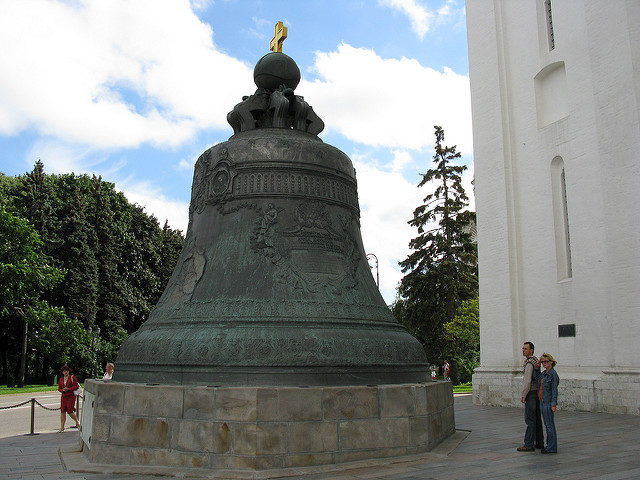
Soon, the fire spread to the wooden casting-frame that supported the bell, which fell back into its casting pit. In an attempt to prevent damage to the bell, guards threw cold water on it, causing a large piece weighing 23,000 pounds to crack off. This chunk alone weighs more than most bells in the world.
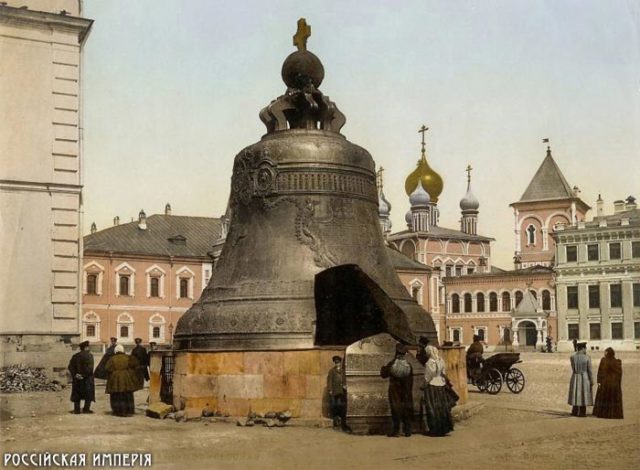
The Tsar Bell remained in its casting pit on Ivan Square in the Kremlin for almost one hundred years. In 1836, it was finally raised out and placed on a stone pedestal by the French architect Auguste de Montferrand, who also created the ball-shaped decoration with a golden cross on the top of the bell. This French Neoclassical architect, considered one of the greatest architects in St. Petersburg’s history, was also the mastermind behind the famous Saint Isaac’s Cathedral and the Alexander Column.
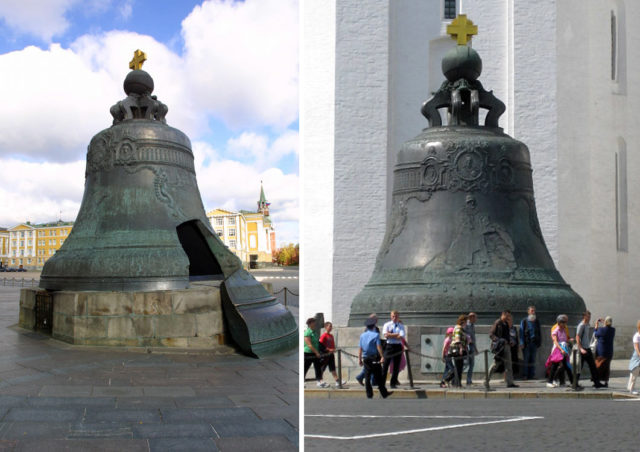
The bell is adorned with nearly life-sized images of Tsar Alexei Romanov and Tsarina Anna Ioannovna, along with plants, sacred images of saints, relief images of baroque angels, and two illustrations telling the story of the bell’s casting.
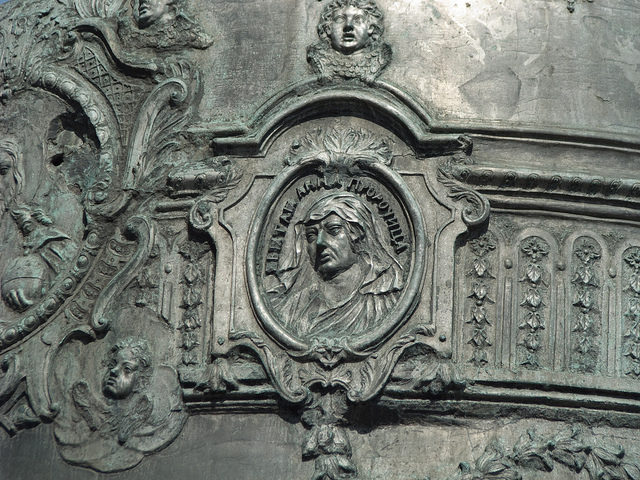
All the images and inscriptions were made by the Russian craftsmen P. Kohktev, V. Kobelev, P. Galkin, P. Serebryakov, and P. Lukovnikov.
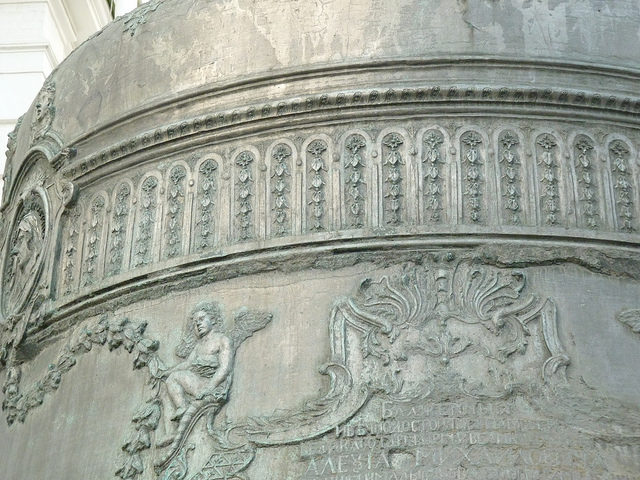
Other famous faces depicted on it include Jesus Christ, Virgin Mary, John the Baptist, and many Russian rulers. In Russia, bells were used not only to indicate church services; they also announced important ceremonies, coronations, celebrations, and were used as an alarm in case of fire or enemy attack.
Though the bell has never been rung, it’s believed that it would be heard at a distance of 30–40 miles if it was. Along with the Tsar Cannon, the largest bombard by caliber in the world, the Tsar Bell dominates Ivanovskaya Square in Moscow’s Kremlin
